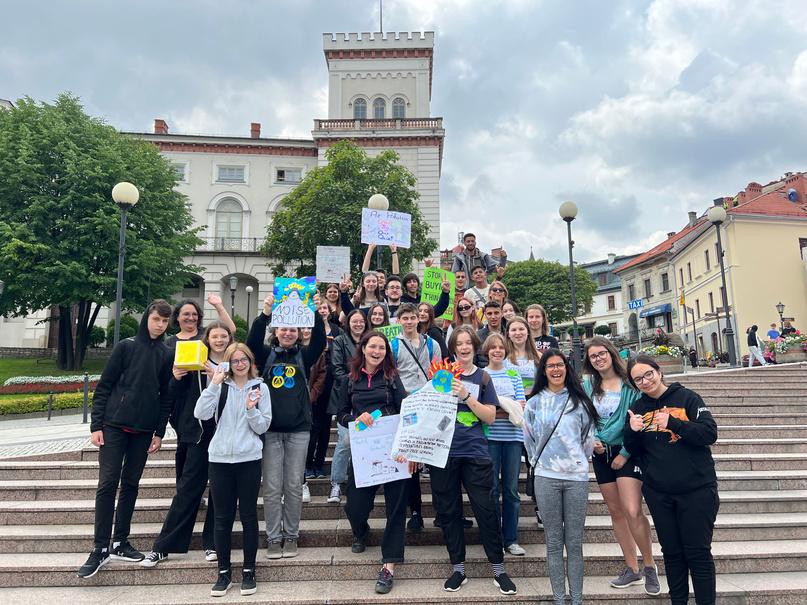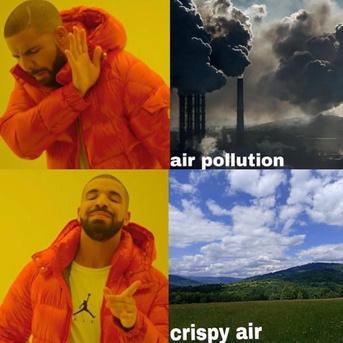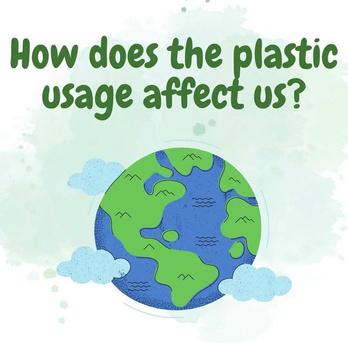









The genesis of this guide took place in June 2022, where a youth exchange co-financed by the European Union took place in Rajcza in southern Poland, carrying the title 'HOPP into Environmental Health', where the word HOPP is a wordplay referring to the name of the host organisation (Health Related Organisation for Promotion and Prevention). As the organisation's name suggests, the project's theme was public health - environmental health, where the outcome of the project was the creation of a street campaign by young people as well as its implementation in practice. As part of the HOPP into Environmental Health project, 5 environmental campaigns were created and carried out by the young participants among the local community in Bielsko-Biała. Topics included consumerism, plastic pollution, noise pollution and the increase in the epidemiological threat posed by global warming. Seemingly unrelated to health and the environment, these topics have a huge impact on the condition of society. One might be tempted to say that they induce the diseases of civilisation.

The exchange also included elements of international integration in the company of nature.
Participants had a positive impact on the local environment through, among other things, an action to clean up littered areas. There was also activity in the form of mountain hiking, which aimed to develop sensitivity as well as awareness of the progressive problems of modern society.
The issue of the environment and ecology is very close to young people. As a result, the young people were able to realise real actions for environmental health. The recipients of their activities were their peers, as well as tourists and residents of the places of action and the headquarters of the organisations.




As part of the HOPP into Environmental Health project, there were 5 environmental campaigns that the young participants carried out among the local community, in Bielsko-Biała. Below are the youth environmental health campaigns:
@noise danger is a campaign that focuses on noise-induced diseases and how to prevent them The most common health problems are hearing loss (NIHL), high blood pressure, heart disease, sleep disorders. These problems also have a negative impact on our social behaviour! Stress can cause irritation and accidents. Noise pollution is often underestimated and it is therefore important to spread awareness about this issue.
The @globe protectors focus on diseases caused by global warming, such as malaria (it has been reported that global warming changes the distribution, intensity of transmission and seasonality of malaria in sub-Saharan Africa) and dengue fever (reports suggest a link between global warming and dengue fever epidemics). Their main aim is to spread awareness about global warming and how to prevent epidemics from developing. Studies show that there is a high correlation between the increase in average annual temperature and the frequency of outbreaks!

@plastic.is.not.funtastic is inspiring people to create change in the fight against plastic pollution. Studies have shown that some chemicals in plastic can seep from the plastic into the food and drinks we eat. Some of these chemicals have been linked to health problems such as obesity, cancer, ADHD or depression. These young people are calling themselves a revolution for a cleaner and healthier future!
@youth stopping consumerism The aim of the young people is to deepen society's understanding of consumerism. What are its consequences? How does it affect the environment? How does it affect society and how does it affect the economy? What are the causes of consumerism? And about the most important thing, how to prevent it!

@breathe healthier raises awareness about air pollution and its impact on our health. The young people cited the WHO's position statement "The health effects of air pollution are serious - one third of deaths from stroke, lung cancer and heart disease are caused by air pollution."



Founded in 2009, Teatro Metaphora - is a non-profit association that aims to develop cultural and educational activities for community development. It aims to develop the social and personal competences of children, young people and adults through the principles of non-formal education.
Teatro Metaphora seeks to co-create an artistic and cultural programme that aims to enhance the quality of life. The organisation's activities are an important part of Madeira's overall strategy to become a creative community, and the organisation itself is a meeting place for innovation and change to enhance Madeira's excellence. Teatro Metaphora promotes equal opportunities, inclusion, active citizenship and participation for children, young people and adults, and the creation of different opportunities for them
The association's main activities can be grouped into three distinctive segments:
1) A wide range of activities and workshops related to sustainability, natural heritage, recycling, climate change and environmental best practices; 2) National and international projects under local, national and European programmes (Erasmus+; European Solidarity Corps; Creative Europe; others); 3) Creation and participation in cultural activities of different artistic disciplines, thus contributing to the development and dissemination of cultural heritage
ATIC is a youth, non-political, non-governmental organisation that aims to develop Romanian society, attracting young people to active citizenship and promoting local and national cultural values. Between A.T.I.C.'s objectives in relation to young people in the community are to encourage active and healthy lifestyles, sports and a balanced diet.
The association organises local sporting events, seminars on healthy diet, as well as involving the youngest members of the organisation in international events with a health theme A T I C was founded in 2016 in Galaţi by a group of young people with the aim of contributing to the social and personal development of local youth It is active in the local community - working with children and young people from care homes, poor families, the elderly and unemployed, as well as people with other social problems.
Together with the ATIC organisation, we have carried out many international projects, mainly youth exchanges under the Erasmus+ Programme.
Asociace středoškolských klubů České republiky z.s.
It is a youth association whose aim is to develop the professional activities and interests of young people up to the age of 26, to search for and train young talents. At the same time, it enables other social activities and interests to be pursued mainly in secondary schools.

While the guide itself addresses the topics of designing and carrying out street campaigns, we will repeatedly refer to the topic of health in the context of these environmental campaigns. The experiences gained by us and by the participants will serve as examples to explain the problems encountered in the The experiences gained by us and by the participants will serve as examples to explain the problems encountered in the group process of developing a campaign, as well as to illustrate the challenges for the the campaign recipients themselves. Using the June exchange as an example, we will discuss the psychological aspects of working with both the group and the campaign audience. Using the example of social campaigns that have already taken place, we will analyse step by step the challenges we encountered in Bielsko-Biała.

While the e-book contains scientific knowledge, it is constructed on the basis of non-formal teaching methods. What is non-formal education really? By definition, it refers to planned, structured programmes and processes of personal and social education for young people to improve a range of skills and competences that take place outside the formal curriculum, including in youth organisations. This means that it does not entail the certification of acquired knowledge or the enhancement of formal education, but places a premium on the acquisition of soft cultural and social skills.

In a general sense, a street campaign is any campaign organised physically, in a public space. The campaign itself, on the other hand, is a set of actions undertaken to achieve a predetermined goal. Typically, these are actions for the benefit of the cultural community, the climate or the development of awareness on a particular issue. Here we build on two important issues. Firstly, there must be a need to solve a problem. Secondly, there needs to be a goal around which we will work in creating a campaign. These definitions are very general and strict adherence to them is not recommended. It is the originality that distinguishes good street campaigns. Admittedly, the above definition gives us an outline of what a street campaign is, but it is up to us how we direct it and what resources we use.

In summary, we have a lot of freedom in this aspect, but we must remember that this is a STREET campaign, so to remain a street campaign by definition, it must be carried out PHYSICALLY in a public space. For example, we cannot run a street campaign online. As an exception we can cite the example of interactive screens, where seemingly we do not see people interacting with passers-by, yet these screens had to be installed, someone had to upload the appropriate software, create content resources in the application, take care of the maintenance of the devices. This hybrid street campaign has become extremely popular in pandemic times, where contact with one another has become difficult, even dangerous. We, however, will focus on the contact form of campaigning.

To create a good street campaign we have identified 7 basic steps, where each step will be discussed in detail in the following pages. It is important not to swap the order of any of the steps as well as not to skip any of them. Only by taking all the steps into account are we able to create a quality and effective street campaign with more than satisfactory coverage.
Every campaign is born out of a need. From a need for change, a negative impact, a desire to help or teach. This is the most important of all stages Without a clear objective and motivation for change, an interest in the topic, we are unable to move on to the next stages. This is also the ideal time to look for people who are equally interested in the issue, because the next stage will be based on building a strong group that will not succumb to random factors, the so-called risk factors for a street campaign.
If you have not yet gathered those willing to pursue a common mission - do it now! Before you move on to campaign planning or data collection, you need to build a strong foundation for working together. Spend a good part of the creation of the campaign getting to know each other, learning to communicate, setting clear boundaries, identifying strengths and weaknesses, etc. It is important at this stage to establish the roles you will play during the campaign. These need to be tailored to your skills, your level of possible involvement as well as your personality. If your budget allows, enlist the help of a coach to conduct social skills training so that you can go through the stages of the group process in a controlled environment.
Unit - A term for those directly involved in a street campaign. Every person in the team is an individual, but not everyone has a more specific function.
Coordinator - The person responsible for the smooth flow of information. Contrary to appearances, he or she is not the decision maker. Decisions should be made collectively, democratically. His or her function is to ensure good communication as well as to manage the predetermined course of the campaign.
Zone co-ordinator - Only applies to larger campaigns involving more than 25 people and a division into teams is necessary (if only because the campaign is placed in several locations simultaneously)
Rescuer/Security Officer - Only in the case of very large campaigns (more than 100 people) or in the case of specific campaign conditions
Spokesperson - The person whose job it is to ensure that the campaign has a good image. He or she controls the work of the person in charge of social media. He or she can also perform both roles, as long as there are people missing from the team. He or she must be the person to give an interview, in case reporters arrive. He or she must not be afraid of public speaking, and use correct language, considering inclusiveness. He or she also establishes partnerships with institutions or venues, creates Facebook events, and takes care of quality content on other platforms. Its role is closely linked to social media management, so it is up to the participants to decide to separate these roles. For smaller teams, this separation of roles is not necessary.
Secretary - The person in charge of all documentation, writing reports, submissions to institutions. This must be someone with a "light pen" as well as a lot of knowledge. An important aspect is transparency. The Secretary must ensure that your activities are clear to everyone. The Secretary consults with the Ombudsman and the Co-ordinator on his/her work.
Once your group is close-knit, understands each other's needs and roles are fully assigned, you can move on to data collection. This is also an important stage of your campaign. In case of questions from passers-by, you want to be prepared and avoid compromising. You need to be prepared substantively. To start with, collect as much data as possible from different sources and then find the common elements. These elements are strong foundations for creating a campaign. They will not be debated, they are irrefutable and they are your main argument. To be credible, you must also remain objective. Stick to the facts. For environmental campaigns, focus on one topic within ecology or divide into sub-teams where everyone is familiar with a different topic.
The main source of knowledge should be scientific publications. The best search engines for this research are researchgate.net and scholar.google.com. There you can search for research by keywords, number of citations and in the language of your choice.
Once you have completed the first three points, it is time to set a campaign goal. This could be, for example, the number of recipients, the number of brochures distributed, a survey on passer-by awareness of environmental change, a film about the campaign or the creation of an ebook. You set the goal. It is important that it has the support of the entire group and a strong factual basis. Changing it in the middle will not yield good results. It is better to fail and learn from your mistakes than to set an apparent goal that does not develop the group and society

It is now time to prepare the campaign. At this stage, the team shares ideas, designs a plan for the campaign, collects and creates promotional materials. Take time for this stage to take place with all group members. This provides an opportunity to brainstorm, modulate live challenges, and search for opportunities Before the campaign itself, it is important to conduct a dress rehearsal in the field. When your eye-catching element is theatre, for example - this is essential! On your first field visit, assess whether the location you have chosen is safe, whether passers-by will be disturbed. If you are campaigning abroad, familiarise yourself with the legal regulations for holding events in public spaces. Weather is also an important aspect of safety. The day before, check whether the weather permits the campaign. Both temperatures that are too cold and temperatures that are too high pose a danger to you. Not to mention rain/hail, which can damage the materials you have collected as well as the electronic equipment you have brought to the campaign site.
Always have a plan B in case of bad weather or other random situations. Check if there are any other events taking place nearby on the day that would distract passers-by. Choose places with a high volume of passers-by. Walking places where people come for recreational purposes are much better than places in the city centre, streets leading towards the station. Look for places without a lot of advertising, the less the more people will focus on your message.
For environmental campaigns, the materials you use should be renewable, eco-friendly. When doing a campaign about plastic consumption - don't hand out drinks in plastic bottles to people. Instead of handing out leaflets to people, show QR codes.
Your dress rehearsal should be preceded by an energiser to energise, relax and stimulate your mind!
The time has come for the clue! This is the moment when your previous efforts will be put to the test and the effectiveness of your previous assumptions will be verified. It is important not to give up if you fail, people learn from their mistakes and your group should be aware of this.Remember to keep the flow of information throughout the campaign. You can set up a sign to help you gather or call for a break. The duration of the campaign should not be too long. It is better to spread your efforts over several days! This also increases the chance of getting a different age structure of the audience.
During the week, you will come across students and schoolchildren in the morning - whereas at weekends, it will be mostly people older than them, running errands they didn't have time for during the week. The hour itself is equally important. To have more audiences you can influence, choose peak hours, or weekends, where most families go for lazy walks.
At this stage, the work of the secretary, who will give a proper report on the progress of the campaign, is most important. This is also the right time to get together and evaluate the results, make corrections and discuss the pros and cons of your action. Through a joint discussion, you can point out all the mistakes made and improve the creative process in the future. Don't forget to show off your work on social media!
Every campaign needs more or less money. You can apply for them from organisations working in the same area, local authorities or other sociallyoriented institutions. In addition, you can ask for the patronage of mayors, politicians or well-known environmental activists.
As far as the psychological aspects are concerned, we have a couple of tips for you that will help you communicate more and get attention more easily:
The primacy effect and the freshness effect - As a rule, we should convey the key information at the beginning and the end of the message, because it is from these stages that people remember the most
First impression is important - We should look neat and friendly The smile should not disappear from your face
Don't keep people waiting for more than a minute - Try to fit in that time with everything you have to communicate As a rule, people are in a hurry and are therefore unable to hold your attention for any length of time
Don't profile people based on appearance - Try to reach everyone
Establish a catchy slogan that you will repeat - It should be simple and understandable. Avoid wordiness. The words used in your slogan should be generally known
Campaign colours are very important - You need to draw attention to yourself, but also be credible. Use colours that draw attention to yourself, but use them in moderation so as not to appear pushy.
We hope that we have been able to convey the most important aspects of running street campaigns and that this publication will serve to help you with your campaigns. If you have any questions, do not hesitate to contact us on Instagram or Facebook. We wish you much success and hope that you dare to change the world and that this e-book will help you take your first steps, for yourself and for a better tomorrow!

Bibliography: 1. https://www.coe.int/en/web/european-youthfoundation/non-formal-education

Tudorache, A-J. (2018). Animate the Global Change. A.R.T Fusion Association
